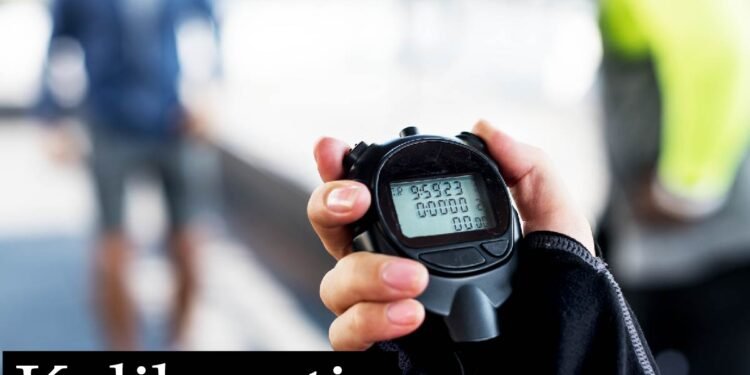Introduction
In a world that increasingly relies on accurate measurements, the role of Kalibraatio—the Finnish term for “calibration”—has never been more essential. Whether we’re talking about high-tech medical devices, advanced aerospace navigation systems, or the coffee scale in your kitchen, calibration ensures that every device functions precisely and consistently. Without kalibraatio, even the most sophisticated equipment can provide misleading data, which in critical fields like healthcare or aviation, could lead to catastrophic consequences. Today, with the rise of automation, artificial intelligence, and interconnected smart systems, ensuring that every device measures true values is no longer optional—it’s a non-negotiable requirement.
This article will dive deep into what kalibraatio truly means, how it works step by step, its application across diverse industries, the standards that govern it, the technologies revolutionizing it, and how you can implement a robust calibration program in your business or organization. With precision as the foundation of trust, safety, and efficiency, understanding and prioritizing kalibraatio becomes the cornerstone of progress and innovation.
What Is Kalibraatio?
Kalibraatio, or calibration, is the process of comparing and adjusting measurement instruments to a known standard. Over time, tools such as thermometers, pressure gauges, or digital analyzers tend to drift due to wear, environmental stress, or mechanical degradation. This drift causes inaccurate readings that can compromise safety, efficiency, and quality. Calibration corrects these deviations by aligning the instrument’s output with a precise reference value, ensuring it reflects reality. Originally rooted in ancient measurement systems, kalibraatio has evolved into a rigorous scientific discipline.
National and international metrology institutions maintain primary standards, and these are used to create a chain of accuracy from top-tier laboratories down to the everyday instruments found in industries, research labs, and households. Every calibration result must be traceable to a recognized standard to maintain the credibility and reliability of the process. This traceability creates a universal language of measurement that allows industries around the world to trust each other’s data and outputs.
A Brief History of Kalibraatio
The origins of kalibraatio stretch back thousands of years when trade relied on agreed-upon weights and balances. Ancient merchants calibrated stones and scales to ensure fair exchanges in marketplaces. With the advent of scientific inquiry during the Enlightenment, calibration took a more formal role in measurement science or metrology.
The establishment of the metric system in France and the eventual creation of international standards like the kilogram and meter laid the groundwork for modern calibration systems. Fast forward to the 20th and 21st centuries, and kalibraatio has become a cornerstone of every precision-focused industry. Organizations like the International Bureau of Weights and Measures (BIPM) and the National Institute of Standards and Technology (NIST) have created frameworks that allow every laboratory and manufacturer to trace their measurements to a global reference.
As tools and instruments became more sophisticated, so did the need for advanced calibration methods—from manual gauge matching to cloud-based, remote-controlled calibration systems. Today, digital transformation and AI are pushing the boundaries even further, bringing kalibraatio into the age of automation and real-time analytics.
How Kalibraatio Works
The kalibraatio process follows a structured sequence of steps designed to ensure the highest level of accuracy. First, a pre-calibration inspection checks the instrument for any visible signs of damage, dirt, or wear that could affect measurement accuracy. After this initial assessment, the next step is the comparison against a reference standard, usually a device with a far higher degree of precision that has itself been calibrated by an accredited laboratory. The technician then measures how far the instrument’s readings deviate from the reference values.
If discrepancies are found, adjustments and corrections are made to bring the instrument back into alignment. The final step is certification and documentation, where all findings are recorded, and a calibration certificate is issued. This certificate includes the date, conditions, deviations observed, corrections made, and reference standards used. Together, these steps form a tight quality control loop that ensures instruments remain accurate over time and under varying conditions.
Core Principles Behind Kalibraatio
Several core principles guide every kalibraatio procedure, ensuring not just accuracy but also universal validity. One foundational element is the use of reference standards, which must be traceable to national or international measurement systems like SI units. This traceability ensures every result is comparable across regions and industries. Another principle is understanding the difference between accuracy and precision. Accuracy refers to how close a measurement is to the true value, while precision indicates the repeatability of measurements.
An instrument can be precise but inaccurate if it consistently delivers the wrong reading. Uncertainty measurement is another crucial aspect—it quantifies the doubt in the calibration result and provides confidence intervals for decisions based on the measurement. Tolerance levels define the acceptable range of error, and any reading outside this range requires immediate corrective action. Finally, all these measurements must be meticulously documented to support compliance, traceability, and future recalibrations.
Types of Calibration
Kalibraatio spans a wide spectrum of disciplines, each requiring unique tools, techniques, and standards. Mechanical calibration includes tools like torque wrenches and pressure gauges used in manufacturing or energy plants. Electrical calibration ensures multimeters, oscilloscopes, and sensors provide accurate voltage, resistance, and current readings in automotive and electronics industries. Thermal calibration checks temperature sensors like thermocouples or ovens, essential in biotech labs and food production.
Chemical and laboratory calibration applies to instruments such as pH meters, spectrophotometers, and analytical balances, which must deliver exact results in pharmaceutical testing and scientific research. Lastly, optical calibration covers photometers and light meters, which are used in environmental monitoring or photonics labs. Each of these categories follows its own procedures and standards, yet all share the common goal of ensuring measurement reliability through proper calibration.
Kalibraatio Across Industries
Kalibraatio plays a critical role in nearly every sector. In healthcare, precision is a matter of life and death. Devices like infusion pumps, MRIs, and ventilators must provide accurate data to guide treatment decisions. Aerospace and aviation rely on perfectly calibrated altimeters, gyroscopes, and GPS systems to ensure passenger safety and flight accuracy. In manufacturing and robotics, CNC machines, robotic arms, and quality control equipment depend on calibration to maintain production standards and minimize waste.
Energy and utilities require precise pressure and flow monitoring to avoid outages and environmental damage. In telecom and electronics, frequency analyzers and signal testers must be calibrated for optimal connectivity and speed. Even scientific research depends on kalibraatio to ensure experimental results are valid and reproducible. Surprisingly, everyday life also benefits—your bathroom scale, car’s tire pressure sensor, and kitchen thermometer all work better when calibrated.
Benefits of Regular Kalibraatio
There are numerous tangible and strategic benefits to implementing a consistent kalibraatio program. First and foremost, enhanced accuracy ensures that every decision based on measurement data—whether in product development, diagnostics, or system control—is grounded in truth. This in turn leads to better safety, especially in sectors where even small errors can result in severe consequences. A well-calibrated machine not only performs better but also lasts longer, since undetected errors often lead to premature wear or catastrophic failure.
Businesses also enjoy cost savings, as accurate instruments reduce waste, prevent rework, and boost efficiency. Regulatory bodies around the world mandate regular calibration, so maintaining compliance avoids legal penalties and audit failures. Perhaps most importantly, consistent calibration builds trust with customers and stakeholders, enhancing brand reputation and market competitiveness in an increasingly data-driven economy.
Common Calibration Methods
Several methods can be used to achieve effective kalibraatio, depending on the equipment and context. The direct comparison method involves comparing an instrument directly with a reference standard to measure deviations. Substitution methods involve swapping in a working, calibrated device temporarily to establish correct readings. For industries that can’t afford downtime, field calibration allows instruments to be adjusted on-site using portable standards and tools.
Software-based calibration has gained traction with the rise of digital sensors; it leverages algorithms and self-learning systems to refine measurements automatically. Meanwhile, self-calibrating instruments use internal references and built-in routines to recalibrate themselves, reducing the need for manual intervention. Each of these methods offers distinct advantages, and often, a combination of them is used to meet both operational and regulatory requirements.
Conclusion
Kalibraatio is far more than a technical process—it is the invisible backbone that holds precision, safety, and trust together across all modern industries. From the moment a pilot checks a flight instrument to the time a doctor reads a patient’s vitals, calibrated devices ensure that every decision is grounded in reality. Without regular and accurate calibration, the systems we rely on—whether in manufacturing, healthcare, science, or everyday tools—can fail silently and dangerously. That’s why kalibraatio is not just a good practice; it is an absolute necessity for operational integrity, customer confidence, and regulatory compliance.
(FAQs)
1. What is kalibraatio in simple words?
Kalibraatio is the process of checking and fixing measuring devices to make sure they are accurate.
2. How often should equipment be calibrated?
It depends on usage, industry rules, and manufacturer guidelines—usually once or twice a year.
3. What happens if I skip calibration?
You risk getting wrong data, which can cause defects, safety issues, or even legal problems.
4. How do I choose a calibration lab?
Pick an accredited lab (like ISO/IEC 17025), check reviews, turnaround time, and industry experience.
5. What does a calibration certificate include?
It contains test results, deviation details, date, standards used, and technician credentials.
More Article Links:


















Discussion about this post